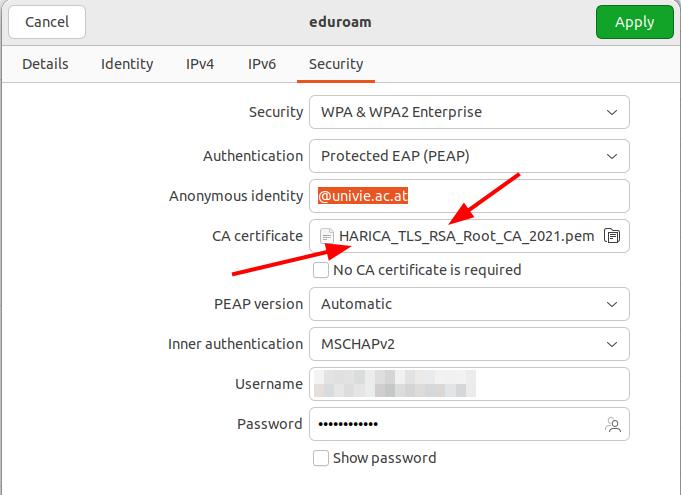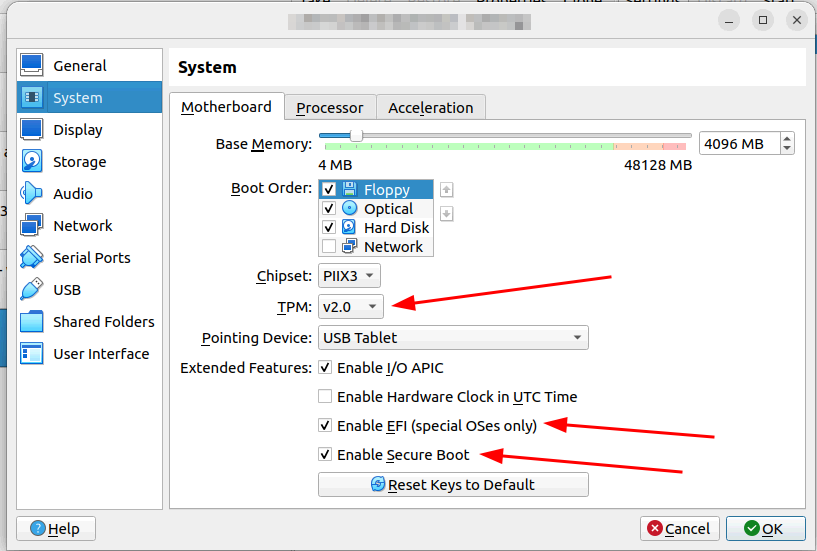Just shortly before Christmas and seemingly pretty much unnoticed by the rest of the world, RCR Wireless reports that mobile network operator One NZ in New Zealand has launched Starlink Direct-to-Device SMS text messaging with four unmodified smartphones! To date I can only find the ‘official’ description of how the service works and only the promotional video on Youtube. Too bad, I’d really be interested in some more technical details and field reports by independent people. I’m sure these will come in due time, but for now, there are at least a few interesting details in the material provided.
Continue reading ‘One’ New Zealand Launches Starlink Direct-to-Device SMS TextingCategory: Uncategorized
Eduroam Setup for Ubuntu 22.04
Last Updated: 12.11.2025

Like a number of times before, here’s a quick note how to setup Eduroam in a secure way, this time for Ubuntu 22.04. My example is for a University of Vienna student, parameters for other institutions might differ slightly. And like in previous Ubuntu versions, one input field is missing in the GUI configuration screen and perhaps thus also left out in the official documentation of the university.
Continue reading Eduroam Setup for Ubuntu 22.04Price Per TB over the Last 5 Years
I’m close to the point where my 8 TB backup disk drives need to be replaced by something bigger. No problem I thought, I’ve had those drives for four and a half years now, so bigger drives will probably come at the same price by now. I expected around 150 euros per 20 GB drive. Well, that didn’t quite work out.
Continue reading Price Per TB over the Last 5 YearsW11 – Part 3 – Virtualbox: Upgrading to Windows 11 on ‘Not-Supported’ Hardware

After I had figured out how to upgrade a Windows 10 installation in a Virtualbox VM to Windows 11 on ‘supported’ hardware, I was ready for the next step and upgrade a VM instance on a Linux based server with somewhat older hardware. In part 1 in this series, I could demonstrate that I can install a fresh W11 in a VM on that server without any problems. So I speculated that an upgrade of a W10 based VM to W11 would also work. Well, not quite…
Continue reading W11 – Part 3 – Virtualbox: Upgrading to Windows 11 on ‘Not-Supported’ HardwareW11 – Part 2 – Virtualbox: Upgrading to Windows 11 on ‘Supported’ Hardware

After realizing that Virtualbox provides everything these days that is required to install Windows 11 from scratch on my server that neither has a ‘supported’ processor nor a physical TPM, I dared to attempt the next step and upgrade my existing Windows 10 VMs to Windows 11. Unfortunately, it turned out that this was not as straight forward as my W11 from scratch install exercises suggested.
Continue reading W11 – Part 2 – Virtualbox: Upgrading to Windows 11 on ‘Supported’ HardwareW11 – Part 1 – Virtualbox: Install Windows 11 on a TPM-less Host

As you probably know, I’m firmly rooted in the Linux camp. Still, for some work related applications I have to use MS Windows. But at least it’s in a virtual machine… For that purpose, I have a Linux based server at home that runs, among many other things, a Windows 10 installation in a Virtualbox VM. The problem: In 2025, support for Windows 10 ends, so an upgrade to Windows 11 is required. Unfortunately, upgrading W10 to W11 in the VM is not straight forward, as the server is 8 years old, and MS thinks the hardware is too old for W11. Particularly, the server does not have a Trusted Platform Module, which is one of the preconditions to upgrade W10 to W11. Eventually, I managed to update the VM, but it was quite an uphill battle. As there were too many unknowns, I thought I’d start to get some experience by installing W11 in a VM from scratch and then build on the knowledge gained from this. As the whole exercise was quite a bit of a learning exercise, I’ll split the topic into a number of blog posts. Enjoy the ride!
Continue reading W11 – Part 1 – Virtualbox: Install Windows 11 on a TPM-less HostThe Unused Fixed Line At Home
A quick self observation post today: When I initially ordered my Internet DSL fixed line at home a decade ago, it came of course with a fixed telephony line. Initially, telephony came as a separate ISDN signal that the DSL router then converted to wireless DECT, for which I bought a nice DECT phone. Time moved on, and a few years ago, the good old ISDN exchanges were decommissioned, and my fixed line was converted to SIP over IP over DSL.
Continue reading The Unused Fixed Line At HomeWho’s Got the Most n78?
I live in Germany, and I’m used to the situation that the national regulator decided to only auction 300 MHz of the 400 MHz of spectrum available in the 3.5 GHz band (n78) back in 2019. As there were 4 applications, this meant that nobody could get the full 5G channel bandwidth of 100 MHz. At the time, two operators got 90 MHz each, while the others got 50 and 90 MHz respectively. Quite a bit of spectrum you might say, but only as long as you don’t look how other countries handled that part of the spectrum.
Continue reading Who’s Got the Most n78?Changing my Color Profile – What!?

I recently bought another Lenovo T14 Gen 4 notebook for redundancy purposes and migrated my NVMe to the new hardware. Things looked good at first, but I soon noticed that the yellow color on some web pages looked a bit odd. At first, I didn’t mind but at some point, I decided to have a closer look.
Continue reading Changing my Color Profile – What!?AT&T Quits LTE NB-IoT
In an interesting post over at RCR Wireless, I noticed today that AT&T is about to shut-down their LTE NB-IoT network. And not only in a couple of years from now. No, the full shutdown is scheduled for Q1/2025. So surely there will be a new and shiny replacement technology in place? Hm, no, not really. The post mentions that customers should move over to LTE CAT-M, but that’s hardly a replacement for embedded and energy efficient devices that require only little data. If you read between the lines of the PR bla bla, I guess AT&T hasn’t seen much uptake of the technology it had in its network since 2019, and is not expecting any significant further uptake in the future. Which makes me wonder how NB-IoT fares in other parts of the world!? Perhaps AT&T’s move is also an indication why there is no real successor technology in 5G NR to NB-IoT. Be that as it may, I’m a bit sad to see an interesting 4G cellular technology being shut-down by a US operator that was so much different from all the high-speed network technology that was deployed in the same timeframe.